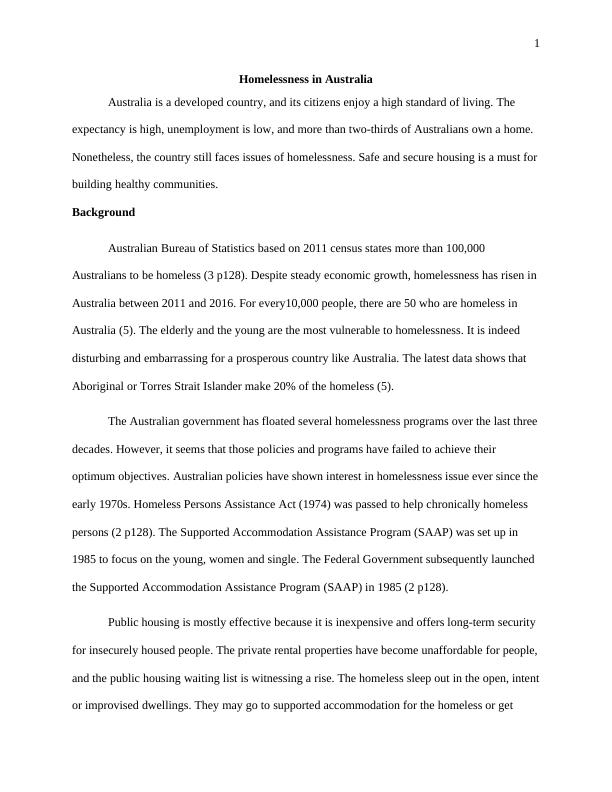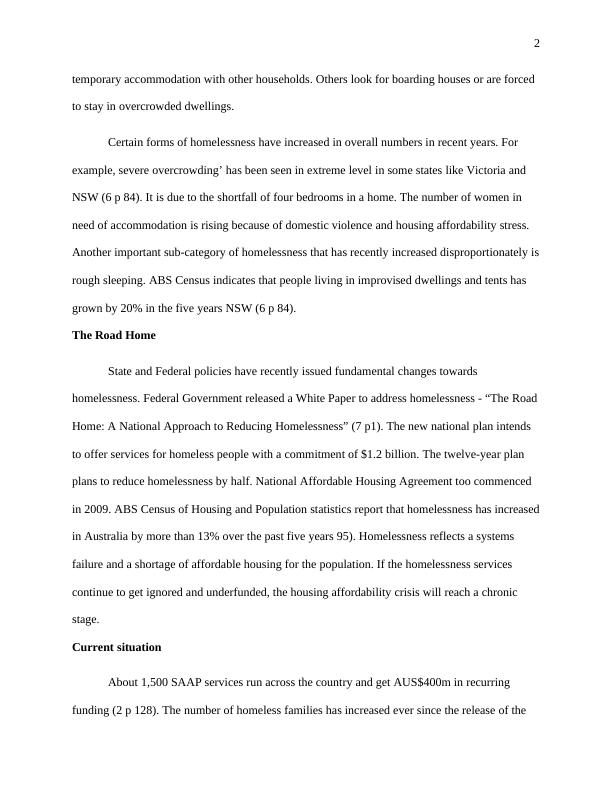Homelessness in Australia
Prepare a briefing paper on one ‘recent’ human services innovation, critically examining its characteristics, logic for its introduction, current or potential contribution to policy, and its link to social, demographic, and political change.
7 Pages2050 Words82 Views
Added on 2023-01-17
About This Document
This article discusses the issue of homelessness in Australia, including its causes, government policies, and potential solutions. It highlights the need for affordable housing and effective support services to address this social problem. Desklib offers study materials and resources to help you understand and research this topic.
Homelessness in Australia
Prepare a briefing paper on one ‘recent’ human services innovation, critically examining its characteristics, logic for its introduction, current or potential contribution to policy, and its link to social, demographic, and political change.
Added on 2023-01-17
ShareRelated Documents
End of preview
Want to access all the pages? Upload your documents or become a member.
Social Determinants of Health Impact on Housing for Indigenous Australians
|15
|4871
|51
Homelessness in Australia: Causes, Impacts and Solutions
|7
|1500
|255
Business Analytics Data Visualization: Homelessness in Australia
|13
|1298
|272
Issues of Homelessness in Australia
|10
|2491
|81
Contemporary Health Issues: Housing and Indigenous Australians
|14
|3378
|46
Homelessness as a Public National Issue Essay
|6
|1798
|212



